A Tropical Flock of Avian Avatars is on Display at McKee Botanical Garden – November 1, 2023 through April 28, 2024 in Vero Beach Florida
This nature-inspired exhibition features ten monumental and environmentally friendly bird sculptures created from bamboo and other mixed media. Each unique Avian Avatar in the Tropical Flock was created specifically for McKee and is made from natural materials, (bamboo and wood, plus a variety of recycled, repurposed, and reused materials that evoke the feeling of feathers. These site-specific sculptures are interactive and accessible. Their monumental scale and site specificity invite visitors to experience the sculptures by walking through them, resting in them, or running playfully through them. The sculptures engage viewers with their impressive scale, unique fabrication techniques and compelling visual appeal.
This exhibition is the perfect complement to the Garden's lush tropical landscape and will blend beautifully with the wide variety of bamboo plants throughout the Garden. The historic gardens at McKee include a bamboo glade from the 1930s on the Main Jungle Trail. Along the Bamboo Trail, there are numerous recently planted varieties of bamboo including Guadua bamboo from South America. This timber grade bamboo was used to build the Bamboo Pavilion at McKee, the first hurricane engineered bamboo structure in the United States.
Watch a video preview of the exhibition or read about this special exhibit in the Vero Beach Magazine, Vero News online or Treasure Coast News. Watch a walk through of this exhibit on Youtube.

Sanctuary (Short Eared Owl)

Sanctuary is a space for contemplation, meditation and reflection. We acknowledge that Sanctuary is located on the unceded ancestral homelands of the Seminole, Ais, Miccosukee and Mascogo. The Short Eared Owl stands as witness of the long history of colonialization in the United States and strives to honor the contemporary lives of Indigenous peoples.
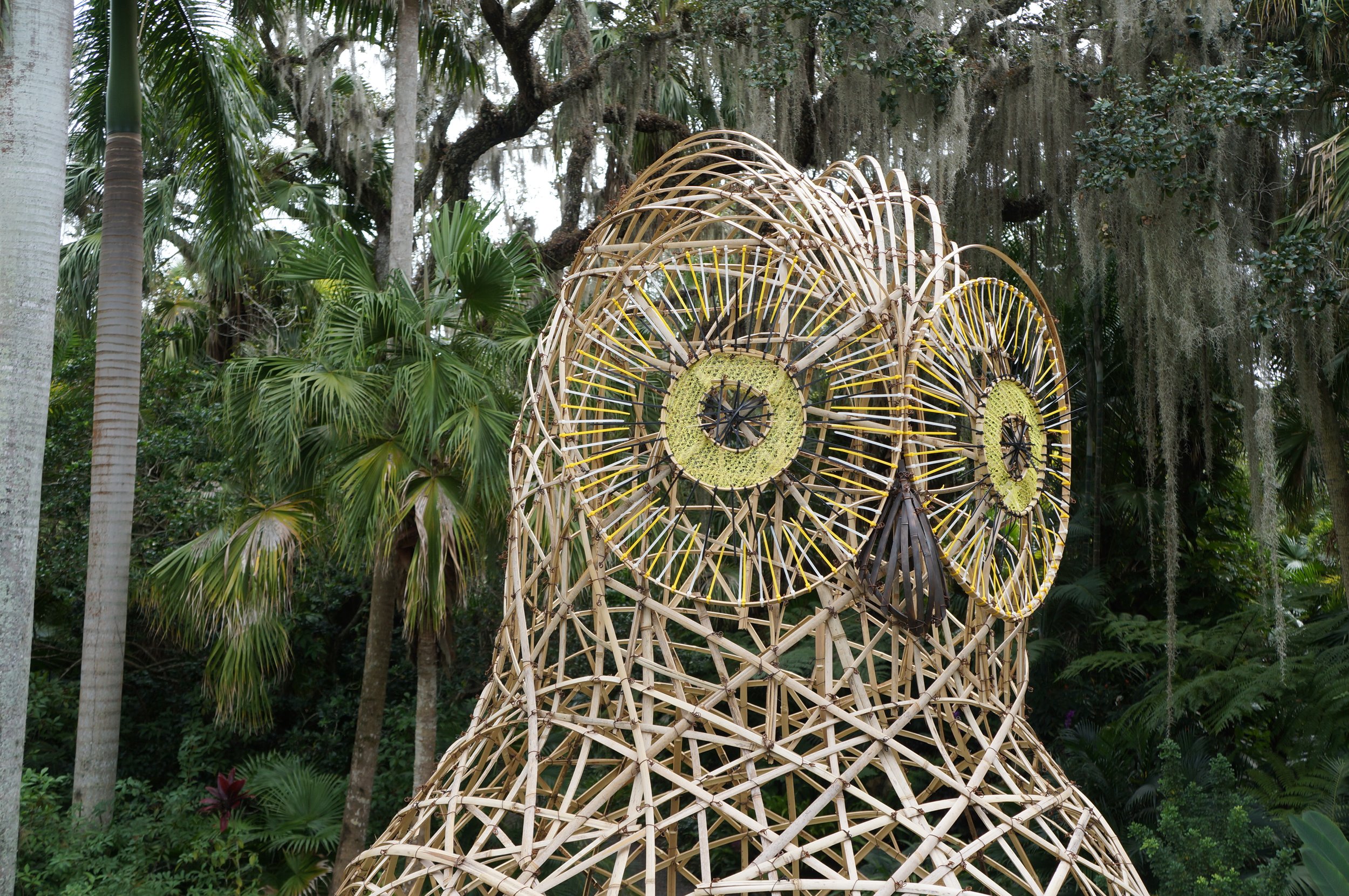
For many people owls are a favorite bird, with Short-eared Owls being just one of more than 200 species worldwide. Short-eared Owls live on every continent of the world, except Antarctica and Australia. They have a winter range throughout the state of Florida, but are elusive and rarely seen. When one does catch a glimpse of a Short-eared Owl hunting it will be often in daylight, mostly in the early morning and at dusk.
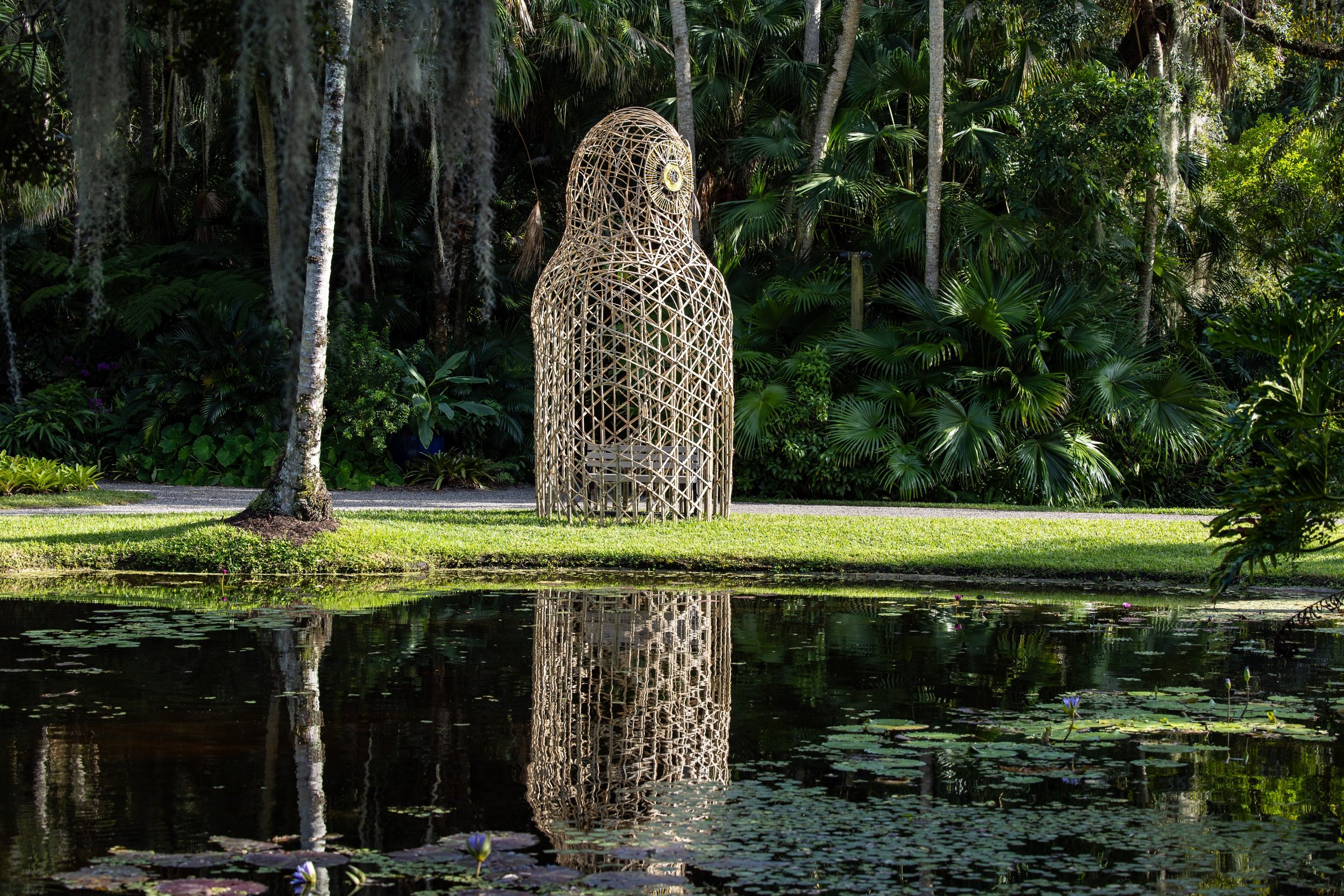
As you sit and contemplate the beauty of the pond and lilies, let us all appreciate the many different peoples that have cherished this unique Floridian landscape and the stewardship of the McKee Botanical Garden that will preserve it for future generations.
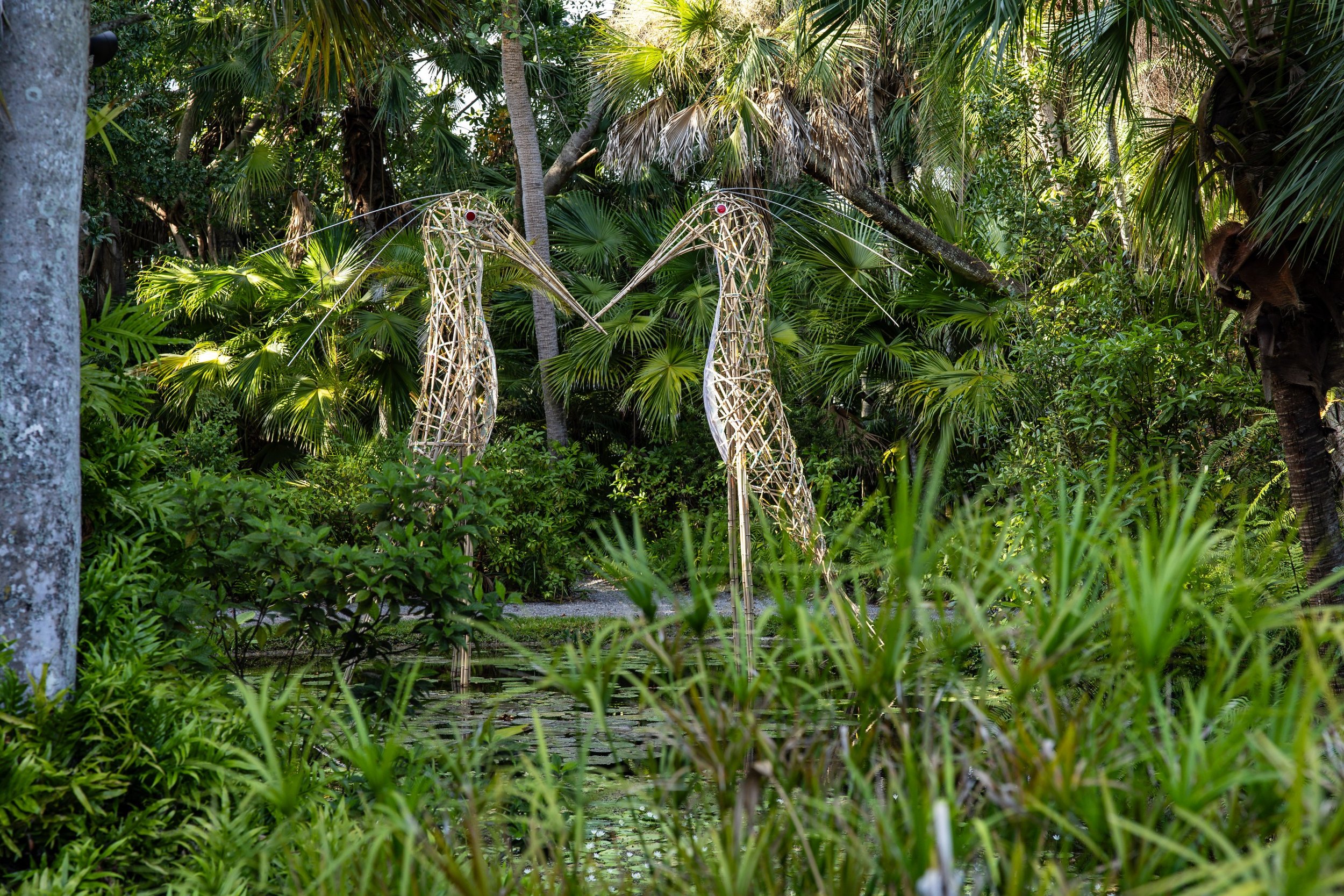
Tenderness (a pair of Tricolored Herons)
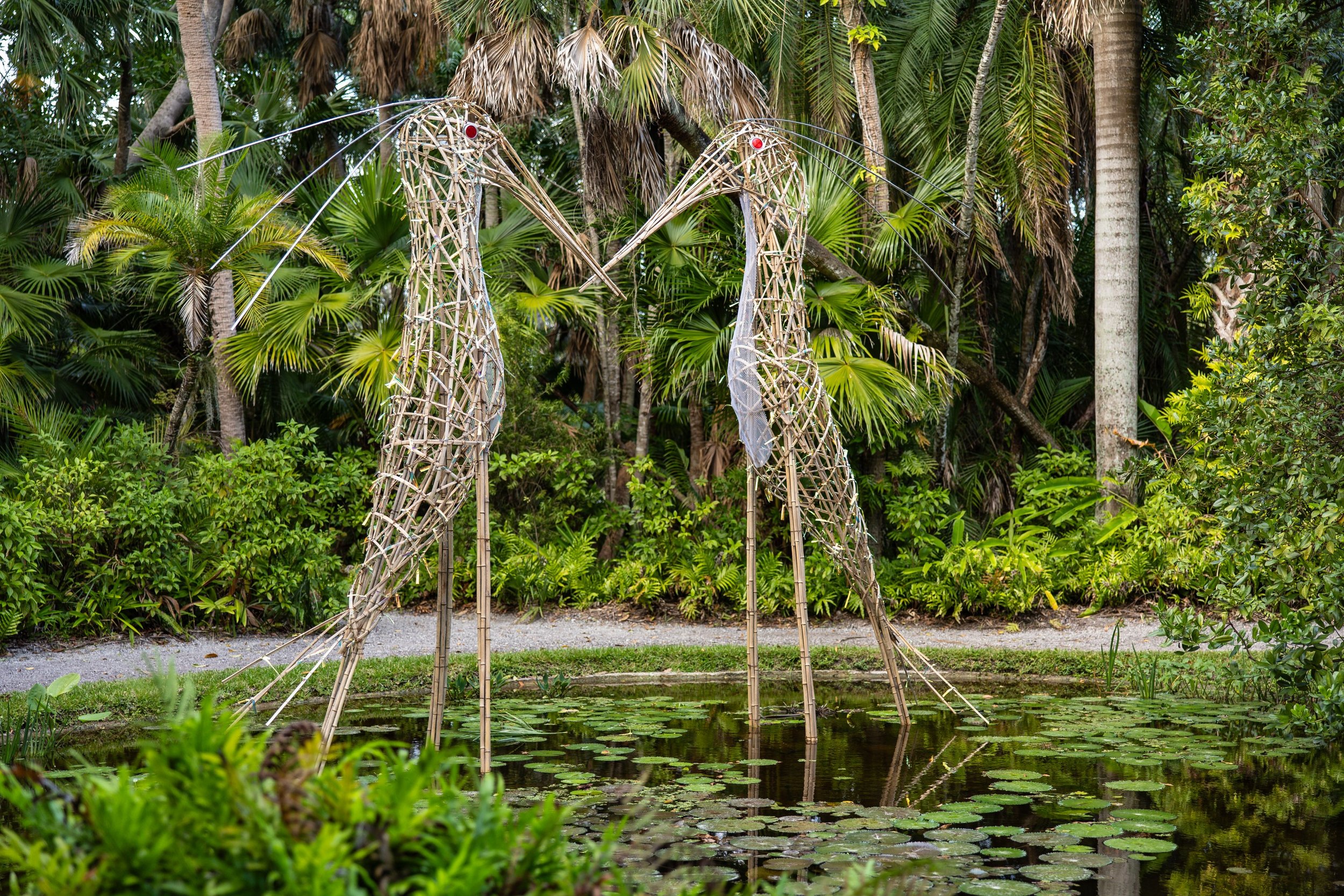
The Tricolored Heron is a very slender wading bird adorned in blue-gray, lavender, and white. The bright stripe down the middle of its sinuous neck and its light belly are distinctive. This fairly small heron wades through coastal waters in search of small fish, often running and stopping with quick turns and starts, as if dancing a ballet.

Tenderness is dedicated to Florida born Bill T Jones and his partner Arnie Zane, two of modern dance’s most distinctive choreographers and artists. Their experimental style used the contrast of their physical differences- Zane was short and white, Jones was tall and black- to create an image that was beautiful in its oddity. Their pieces fused Jones' power and grace with Zane’s quick and wiry movement.

Although Arnie Zane died young, Jones continues their life’s work. The Bill T. Jones/Arnie Zane Company has performed worldwide in over 200 cities in 40 countries on every major continent and is celebrated as an innovative and powerful force in the dance-theater world.

Clatter, a trio of Wood Storks, pays homage to the three founding fathers of the McKee Botanical Garden: Arthur McKee, Waldo Sexton and William Lyman Phillips. Arthur McKee, the namesake of the McKee Botanical Garden, loved plants and flowers, particularly orchids. He delighted in the patterns made by the sun filtering through the jungle. His mission in life was to share these pleasures with others. Waldo Sexton was an entrepreneur and an independent citrus grower who purchased this land for planting citrus groves but he quickly decided the landscape was too beautiful to plow under, and subsequently used the garden for his collection of rare flora and fauna. He was named to the list of Great Floridians by the Florida Department of State for his agricultural contributions. A Pioneer of Tropical Landscape Architecture, William Lyman Phillips played a seminal role in the history of landscape architecture. Educated at Harvard, Phillips worked with the Olmsted Brothers firm in Boston, but followed his love of tropical and subtropical botany to Florida. His respect for the low topography and flowing waters of the everglades had a profound influence on his design of the McKee Botanical Garden.
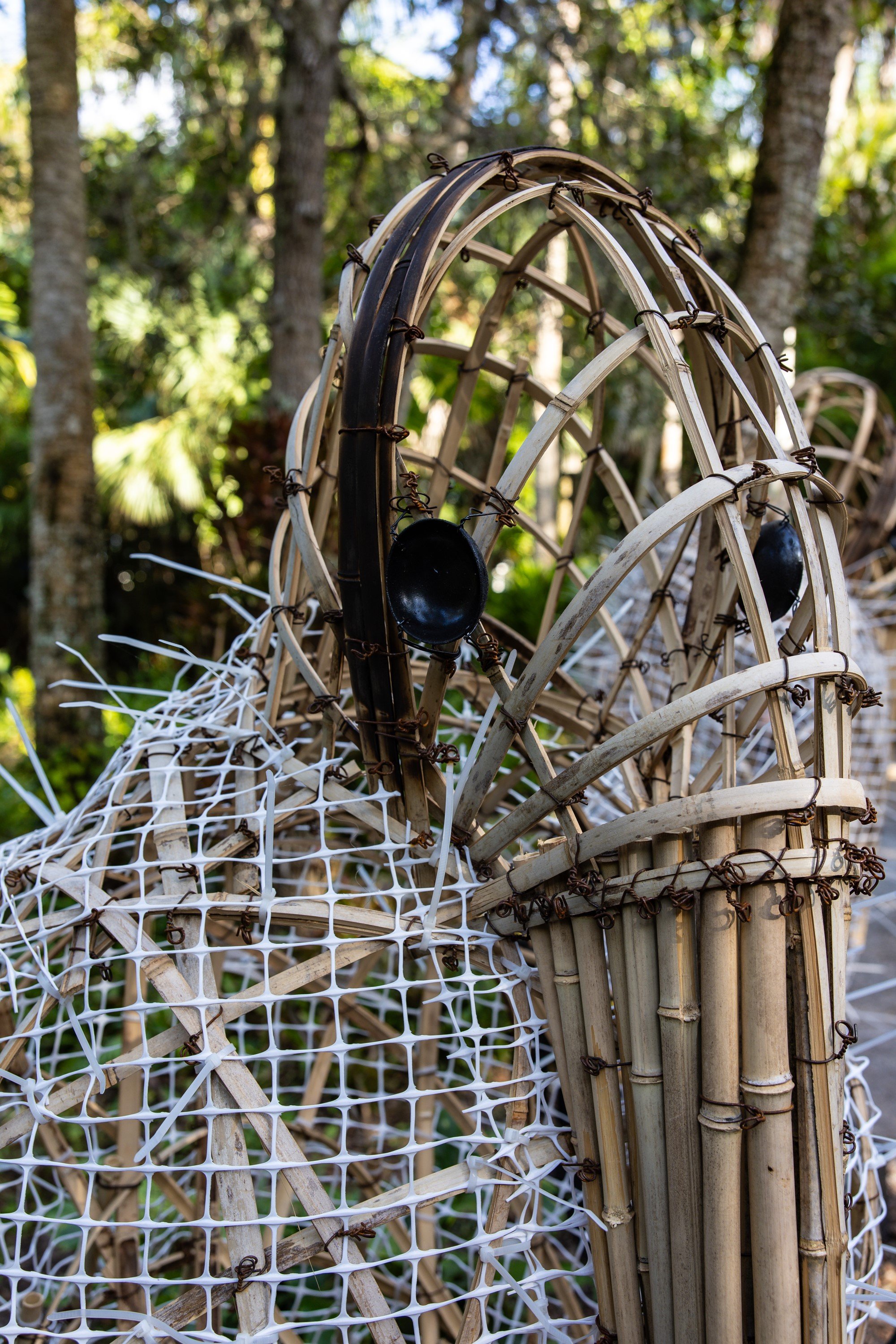
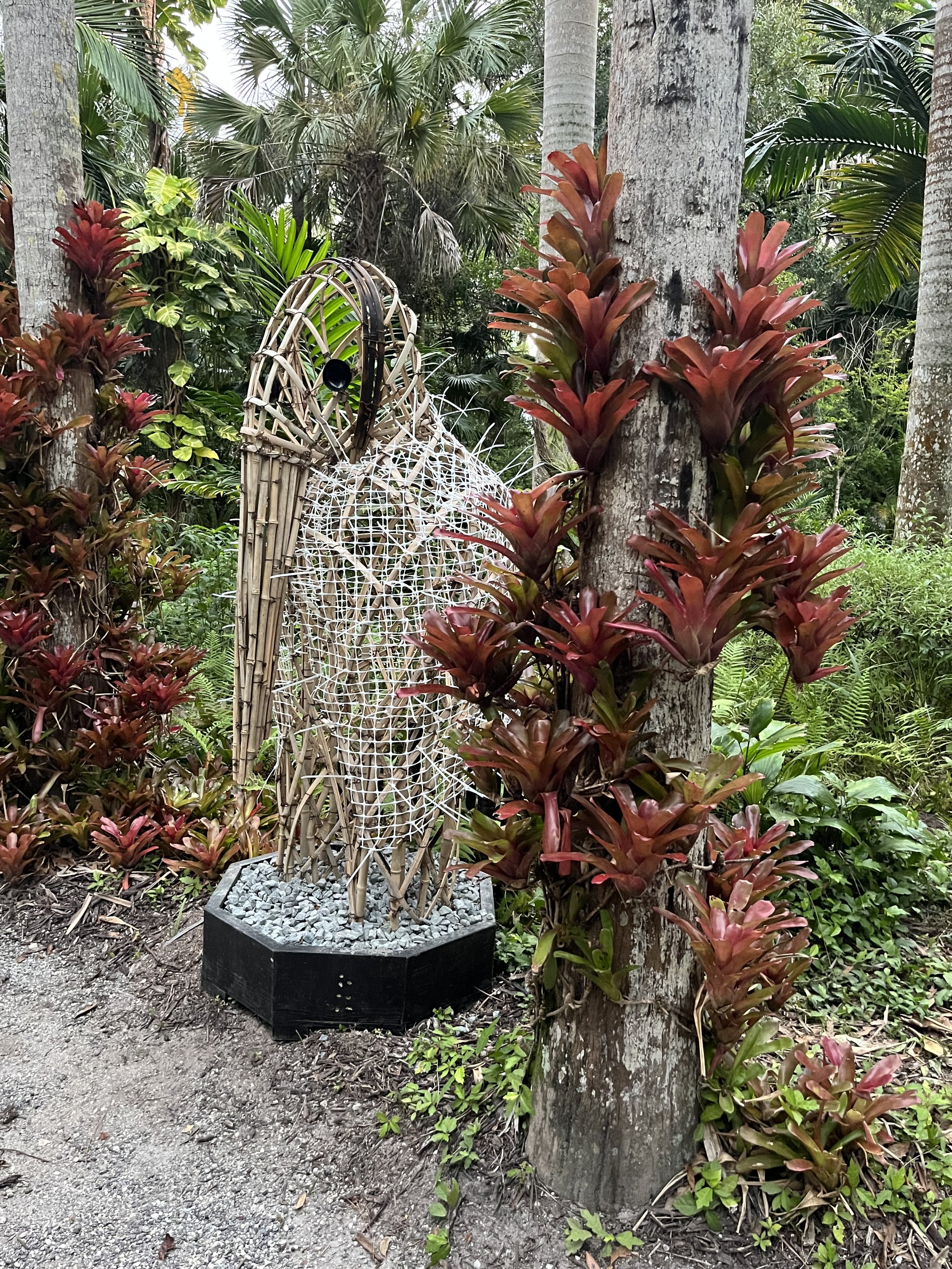
The prehistoric-looking Wood Stork stands four feet tall with a white feathered body. Its slate-colored pebbly bald head, little black eyes, and large heavy bill has earned it the name of “Old Flinthead.” The Wood Stork is an iconic species that has focused attention on the complex interdependence of birds and wetlands.

Wood Storks nesting in the United States nearly disappeared by the 1970s. Attention to rebuilding the population led to restoration efforts in the Everglades. Over the past decades Wood Storks have doubled their breeding population and more than tripled their number of nesting colonies.

Liftoff (Anhinga) The word anhinga comes from Brazilian "snake bird". The origin of the name is apparent when swimming: only the neck appears above water so the bird looks like a snake ready to strike. Unlike other common swimming birds, anhingas are less buoyant. This makes them more efficient divers when they chase after prey like fish, insect, crawfish and other aquatic goodies. Flocks of anhingas are called a Kettle, and have been described as resembling black paper gliders.

Bessie Coleman, popularly known as Queen Bess and Brave Bessie, was a celebrated pilot in the notoriously dangerous air shows in the United States. She was the first African-American woman and first Native American to hold a pilot license. Bessie’s parents were sharecroppers and she was born into a family of thirteen children, but she was determined to fly. When every flight school in America rejected her applications because of her race and sex, she went to Europe to train as an acrobatic stunt flyer. Her pioneering role was an inspiration to early pilots.

The Steward (Belted King Fisher) The Belted King Fisher is a distinctive bird known for its chattering call and its deep diving abilities. In addition to the iconic shaggy crest plumage and white neck band, females have a rust-red band on the belly that the males lack, making the belted kingfisher one of the few birds where the female is more colorful than the male. Indian River Lagoon in Vero Beach, is the most biologically diverse estuary in North America and home to the Belted Kingfisher. Preserving this treasure is vital to the many birds, fish and animals that contribute to this vibrant ecosystem.

This sculpture celebrates Dr. Edith Widder Smith for her dedication to the improvement of the Indian River Lagoon in Vero Beach. Dr. Smith is an internationally recognized deep-sea explorer, American oceanographer, MacArthur Fellow, and author. As the Co-founder, CEO and Senior Scientist at the Ocean Research Conservation Association (ORCA) she has been an award winning science activist whose work is healing our oceans. “Our focus is on reversing the trend of oceanic and near-shore marine ecosystem degradation.”

Platinum Peahen (White Peahen) The Platinum Peahen is inspired by the exquisite white peafowl. Never did a bird have more of a right to display its vanity. A white version of an animal can be found in nearly any species, but the white peafowl is not an albino. Due to a genetic variation, the feathers that do not have pigmentation. White peafowl have blue eyes and colored skin.

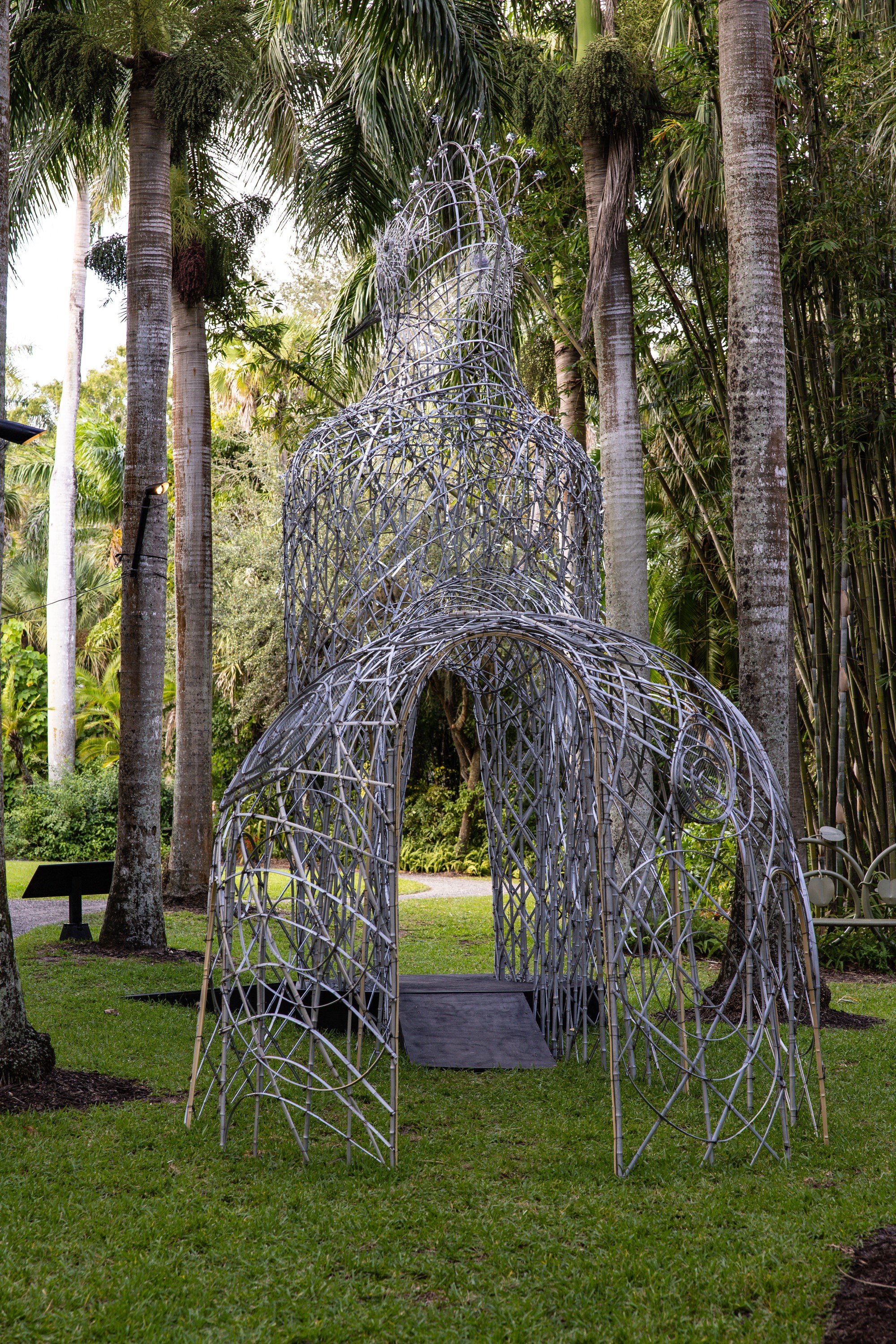

May Mann Jennings was a striking and brave woman who harnessed the power of community on behalf of Floridians. Her father was a Florida State Senator and her husband was Florida’s governor, William Sherman Jennings. May used her influential network of motivated women to fight for many issues that that still resonate in our world today such as environmental conservation, preservation of state parks, education reforms, and highway beautification. May Mann Jennings became president of the Florida Federation of Women’s Clubs in 1914. One of the Federation’s greatest accomplishments under Jennings’ leadership was to establish Royal Palm State Park to protect a segment of the Everglades. She was often called the Mother of Florida forestry.

Surprise (American Bittern) American Bitterns are stealth predators. They stand motionless and wait for prey to approach, or stalk it with barely perceptible motions. When alarmed they pose, beak pointing straight up, and blend in with their reedy background. If wind stirs the vegetation, the bittern may also sway its head. The American Bittern is nicknamed the Stake Driver, Thunder Pump and Mire Drum, in reference to their a deep resonant oonk-a-lunk call, which has been likened to the bellowing of a bull or a hydraulic machine. It's odd that a bird this secretive makes such a racket. Dessie Smith Prescott is Florida pioneer known for being the first professional female guide in the Sunshine State, as well as the first licensed female pilot. She is well-known for her extraordinary knowledge of Florida’s natural resources, having hunted and fished in rural Florida from a young age. Her story was documented famously by Pulitzer Prize-winning novelist Marjorie Kinnan Rawlings. Like the American Bittern, Dessie Smith Prescott spent her life among cattails and sawgrass, in freshwater and saltwater marshes throughout rural Florida.